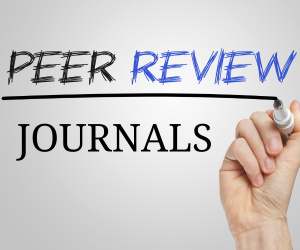ASSOCIATION OF TYPE 2 DIABETES MELLITUS AND CANDIDIASIS : A TEN YEARS SYSTEMATIC REVIEW
DOI:
https://doi.org/10.61841/mc2acz58Keywords:
Candidiasis, type 2 diabetes mellitus, fungal, infection.Abstract
Background: Diabetes mellitus is a chronic disease that may reduce resistance to microbial infection of tissues and decrease tissue repair capacity. It is both an endocrine and a metabolic dysfunction involving the control of blood glucose levels, resulting in hyperglycemia.
The aim: The aim of this study to show about association of type 2 diabetes mellitus and candidiasis.
Methods: By the Preferred Reporting Items for Systematic Review and Meta-Analysis (PRISMA) 2020, this study was able to show that it met all of the requirements. This search approach, publications that came out between 2014 and 2024 were taken into account. Several different online reference sources, like Pubmed, SagePub, and Sciencedirect were used to do this. It was decided not to take into account review pieces, works that had already been published, or works that were only half done.
Result: Five publications were found to be directly related to our ongoing systematic examination after a rigorous three-level screening approach. Subsequently, a comprehensive analysis of the complete text was conducted, and additional scrutiny was given to these articles.
Conclusion: Diabetic patients had a higher candidal carriage rate and a variety of candidal species that were resistant to azole antifungal agents.
References
Lao M, Li C, Li J, Chen D, Ding M, Gong Y. Opportunistic invasive fungal disease in patients with type 2 diabetes mellitus from Southern China: Clinical features and associated factors. J Diabetes Investig. 2020;11(3):731–44.
Chouhan S, Kallianpur S, Prabhu Kt, Tijare M, Kasetty S, Gupta S. Candidal prevalence in diabetics and its species identification. Int J Appl Basic Med Res [Internet]. 2019;9(1):49. Available from: https://journals.lww.com/10.4103/ijabmr.IJABMR_259_18
Mohammed L, Jha G, Malasevskaia I, Goud HK, Hassan A. The Interplay Between Sugar and Yeast Infections: Do Diabetics Have a Greater Predisposition to Develop Oral and Vulvovaginal Candidiasis? Cureus. 2021;13(2).
Nouraei H, Jahromi MG, Jahromi LR, Zomorodian K, Pakshir K. Potential Pathogenicity of Candida Species Isolated from Oral Cavity of Patients with Diabetes Mellitus. Biomed Res Int. 2021;2021(type 1):1–6.
Talapko J, Meštrović T, Škrlec I. Growing importance of urogenital candidiasis in individuals with diabetes: A narrative review. World J Diabetes. 2022;13(10):809–21.
Gomes CC, Guimarães LS, Pinto LCC, Camargo GADCG, Valente MIB, Sarquis MIDM. Investigations of the prevalence and virulence of candida albicans in periodontal and endodontic lesions in diabetic and normoglycemic patients. J Appl Oral Sci. 2017;25(3):274–81.
Kumar S, Padmashree S, Jayalekshmi R. Correlation of salivary glucose, blood glucose and oral candidal carriage in the saliva of type 2 diabetics: A case-control study. Contemp Clin Dent. 2014;5(3):312–7.
Vijayalakshmi L, Raj JS, Kavitha J, Krishnaraj S, Manovijay B, Manikandan D. A case–control study to evaluate candidal parameters in the oral cavity of patients with type 2 diabetes mellitus. J Pharm Bioallied Sci [Internet]. 2020;12(5):389. Available from: https://journals.lww.com/10.4103/jpbs.JPBS_115_20
Bhuyan L, Hassan S, Dash K, Panda A, Behura S, Ramachandra S. Candida species diversity in oral cavity of type 2 diabetic patients and their In vitro antifungal susceptibility. Contemp Clin Dent [Internet]. 2018;9(5):83. Available from: https://journals.lww.com/10.4103/ccd.ccd_70_18
Shenoy MP, Puranik RS, Vanaki SS, Puranik SR, Shetty P, Shenoy R. A comparative study of oral candidal species carriage in patients with type1 and type2 diabetes mellitus. J Oral Maxillofac Pathol. 2014;18(5):60–5.
Rodrigues CF, Rodrigues ME, Henriques M. Candida sp. Infections in patients with diabetes mellitus. J Clin Med. 2019;8(1).
Pérez-Vielma NM, Gómez-López M, Martínez-Godínez M de los Á, Luna-Torres AL, Domínguez López A, Miliar-García Á. Candida Variety in the Oral Cavity of Mexican Subjects with Type 2 Diabetes Mellitus and TLR2 Gene Expression. Clin Pract. 2024;14(2):417–25.
Rasoulpoor S, Shohaimi S, Salari N, Vaisi-Raygani A, Rasoulpoor S, Shabani S, et al. Candida albicans skin infection in patients with type 2 diabetes: a systematic review and meta-analysis. J Diabetes Metab Disord. 2021;20(1):665–72.
Zarei N, Roudbary M, Mohammadi SR, Santos ALS Dos, Nikoomanesh F, Mohammadi R, et al. Prevalence, molecular identification, and genotyping of Candida species recovered from oral cavity among patients with diabetes mellitus from Tehran, Iran. Adv Biomed Res. 2022;11(1):29.
Al-Janabi AAHS. A Positive or Negative Connection of Diabetes Mellitus to the Oral Microbiota. Eurasian J Med. 2023;55(1):83–9.
Bhattacharyya A, Chandra S, Singh A, Raj V, Gupta B. Salivary glucose levels and oral candidal carriage in Type 2 diabetics. J Oral Biol Craniofacial Res [Internet]. 2018;8(3):158–64. Available from: http://dx.doi.org/10.1016/j.jobcr.2016.11.004
Downloads
Published
Issue
Section
License

This work is licensed under a Creative Commons Attribution 4.0 International License.
You are free to:
- Share — copy and redistribute the material in any medium or format for any purpose, even commercially.
- Adapt — remix, transform, and build upon the material for any purpose, even commercially.
- The licensor cannot revoke these freedoms as long as you follow the license terms.
Under the following terms:
- Attribution — You must give appropriate credit , provide a link to the license, and indicate if changes were made . You may do so in any reasonable manner, but not in any way that suggests the licensor endorses you or your use.
- No additional restrictions — You may not apply legal terms or technological measures that legally restrict others from doing anything the license permits.
Notices:
You do not have to comply with the license for elements of the material in the public domain or where your use is permitted by an applicable exception or limitation .
No warranties are given. The license may not give you all of the permissions necessary for your intended use. For example, other rights such as publicity, privacy, or moral rights may limit how you use the material.







